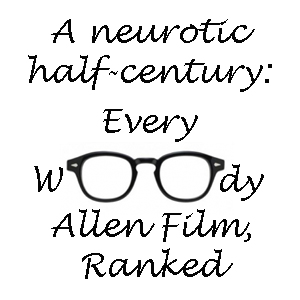Twenty-five years ago in “The Terminator,” James Cameron worried that technology would spell the end of mankind. In his subsequent films, he continued to mull our arrogance about what we create. In “Aliens,” we had the weaponry, but still, our best soldiers were barely a match for the aliens. In “The Abyss,” we didn’t know how to handle meeting an underwater civilization. And “Titanic” was the ultimate “overconfidence in what we create” lesson from history.
In “Avatar,” the writer-director’s first fiction film in 12 years, Cameron worries that it’s our arrogant actions that will spell the end — and while high-tech weaponry might help us do it, the blame ultimately lies with our collective horrible decisions as a human race (thematically, it’s an appropriate filmic capper for 2009). True, some good guys in this movie are humans; still, “Avatar” strikes me as his most non-idealistic film so far (and among blockbuster moviemakers, Cameron isn’t considered an idealist to begin with).
In a future where the Earth is dying, the Earth’s military decides to wipe out the indigenous population of Pandora in order to get to the riches buried beneath — a mineral the script winkingly calls “unobtanium.”
The aesthetically gorgeous natives are blue and about twice human size. Their culture is broadly based on Native American tribe societies — combined with the tree-dwelling nature of Wookiees — and their facial features tend toward African. Zoe Saldana, despite being blue and double normal size, is strikingly attractive as the Pandoran that our hero, Jake Sully (or Jakesully in the parlance of the natives), first meets. Although Jake (Sam Worthington) is human, he is in the body of a test-tube-grown Pandoran; the humans send down several avatars to get to know the natives. The spiritual natives dub them “Sky People,” and dismiss them as childlike idiots, but Saldana’s character eventually warms to Jake.
I have switched from “us” (when I was talking about humans in “The Terminator”) to “humans” (when I’m talking about the humans in “Avatar”). That’s no accident, because Cameron has shifted his viewpoint as well. We, as average moviegoers, are generally a bit distanced from “primitive/native/tribal” characters, even when they are the good guys (see George Lucas’ Ewoks or Gungans, who were helpers to the humans, not the sole force). But here we feel like we are the Pandorans, and the humans are the evil alien invaders.
Cameron makes us feel ashamed that we will again be humans once we take off the 3-D glasses and leave the theater. To achieve this, he uses his usual combination: Broad storytelling devices (the lead military man is a complete ass) combined with the latest tools for creating a magnificent fictional world on screen.
Pandora, described as worse than hell by the military man (he suggests the soldiers might want to go to hell for some R&R after a tour of duty on Pandora), is a feast for the eyes. Imagine that sequence at the Earth’s core in “Journey to the Center of the Earth 3-D,” and then multiply the flora and fauna and overall beauty by 100. Computer-generated worlds don’t make a great movie in and of themselves, but if you do a great job creating one, as Cameron’s team does, it certainly pushes the movie in the right direction.

Just as the military leader is an oh-so-obvious villain, Worthington’s character is an obvious audience surrogate — in the real world, he is a paraplegic; on Pandora, he can jump among tree limbs; we are with him every step of the way as he begins to love his new people (well, particularly the blue, mostly naked Saldana).
So yeah, this is very much a James Cameron movie. It’s beautiful to look at, it takes us to task for the direction we’re heading in, and it’s just a bit heavy handed (yet easy to forgive for that, because his point is valid). Anyone who remotely likes movies must see the 3-D version of “Avatar” at least once in theaters.
And then come back here to let me know what you think.
